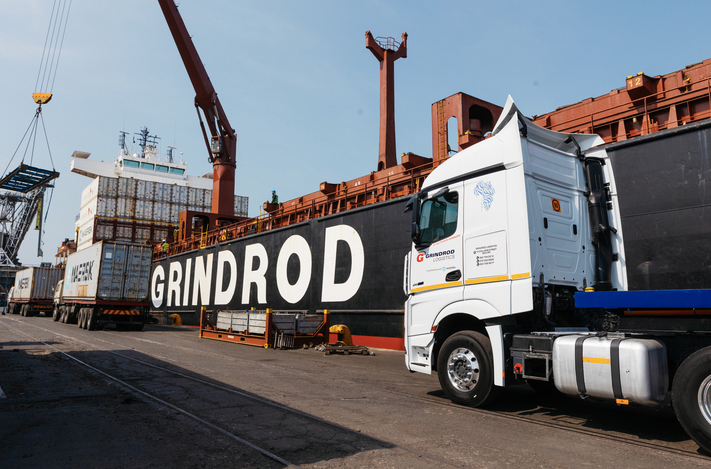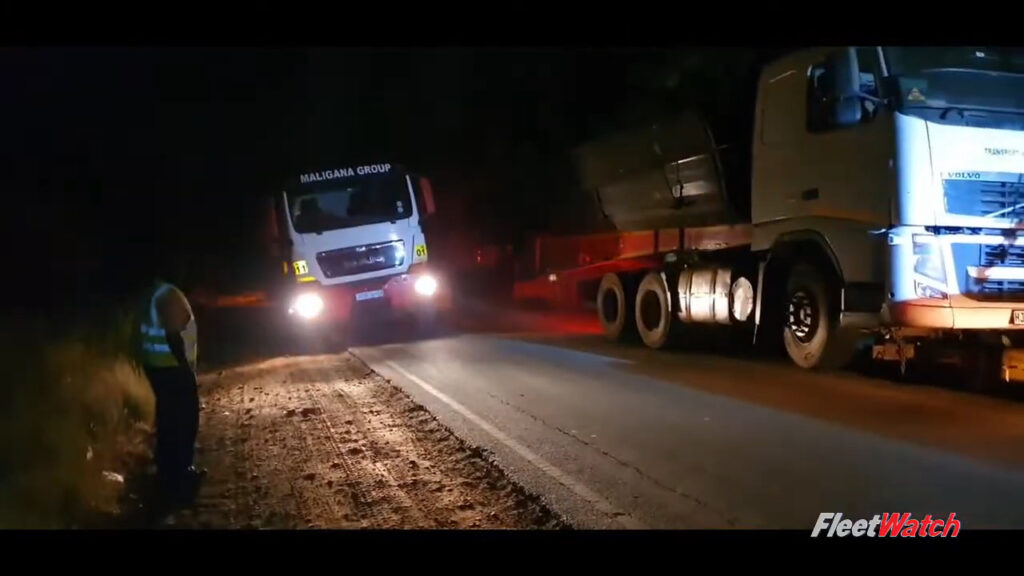For Africa’s road freight and logistics sector, discussions around “corridors” can often feel theoretical – but that’s starting to change. At the 43rd Southern African Transport Conference on 10 July 2025, the European Commission’s Paul Riembault made a compelling case for why Africa’s time is now. Drawing on Europe’s decades-long corridor experience, Riembault unpacked how politically aligned, criteria‑based infrastructure planning can shift economies into gear – and why African players must lead from the front.
“Transport corridors are not just about roads and rails,” he told delegates. “They’re about unlocking integration, intra-African trade and regional prosperity.” With more than €1.5 billion already committed through the EU’s Global Gateway initiative and projects like the Maputo-Walvis Bay corridor and Lagos water-transport upgrades already underway, this is more than talk. It’s a call to Africa’s planners, funders and regulators to step up – with Europe as an ally, not a blueprint.
Riembault explored how Africa could leverage the European Union’s long and complex corridor development experience. He encouraged African institutions, planners and financiers to continue their coordinated approach to corridor development – and to consider Europe’s successes as well as challenges in transforming fragmented infrastructure into the backbone of a thriving single market.
Corridors of Opportunity: Europe and Africa Pave the Way Together
Insights from Paul Riembault of the Directorate-General for International Partnerships (DG INTPA) at the European Commission.
Transport corridors are among the most powerful engines for economic transformation. In Europe, every euro invested in the continent’s Trans-European Transport Network has been estimated to return four euros in GDP. The same – or even greater – potential exists in Africa – if investments are focused and coordinated.
From fragmentation to connectivity
Riembault outlined Europe’s difficult past – a continent once divided by war, incompatible rail gauges and isolated national railway systems. “Europe’s map was built to divide, not connect,” he noted. But from the wreckage of conflict came the political will to unite, and with that will came the need for infrastructure that reflected integration.
Corridors in Europe, he explained, were not the starting point but the outcome of political alignment. The EU’s single market project created the demand for connectivity, and the Trans-European Transport Network (TEN-T) emerged to meet that demand.
A criteria-based approach to planning
What sets Europe’s TEN-T model apart is its data-driven, criteria-based approach he said. Corridors are not selected arbitrarily or through purely political negotiation. Instead, they are based on criteria or even hard data: e.g. ports handling more than 33 million tonnes of freight annually – corresponding to 1% of total EU freight, cities with over one million inhabitants, capital cities and strategic industrial zones. These “core nodes” anchor each multimodal corridor.
“In a Union of 27 Member States, it’s natural that national interests may diverge,” Riembault said, adding that a strong common framework serves as protection against shifting political priorities and pet projects.
Currently, TEN-T consists of nine multimodal corridors, supported by harmonised regulations in road safety, rail electrification, axle loads, rail signalling systems and even ticketing interoperability. Infrastructure is just one layer – governance, standardisation and financing form the others.
“Without harmonisation, corridors become patchworks. We learned the hard way in Europe. Interoperability should be started from day one.”
Global gateway: investment approach in Africa
Riembault’s presentation also highlighted how the EU is applying the approach of concentrating investment through the Global Gateway initiative – the EU’s global investment strategy, which prioritises energy, digital and transport infrastructure.
Through Global Gateway, the EU has identified a shortlist of African corridors – aligned with African Union (AU) and Regional Economic Community (REC) priorities – where it is focusing its transport funding between 2021 and 2027.
“The goal is not to duplicate Africa’s frameworks like the Programme for Infrastructure Development in Africa (PIDA) or the African Continental Free Trade Area (AfCFTA),” he said. “The goal is to support them – strategically and at scale.”
More than €1.5 billion (about R30 billion) in grants have already been earmarked to African corridor development under the Global Gateway initiative, with many projects supported through blended financing that combines EU grants with loans and private capital. Among the flagship investments is the Maputo-Walvis Bay rail corridor, where upgrades in Mozambique are set to significantly boost freight capacity.
In Dakar, a Bus Rapid Transit (BRT) system has been rolled out, featuring over 120 electric buses and dedicated lanes to enhance urban mobility and reduce emissions. Meanwhile, in Lagos, the OMI EKO water transport project should improve connectivity along the Abidjan-Lagos corridor by expanding ferry services and infrastructure to better serve the region’s rapidly growing population.
In addition to physical infrastructure, the EU is funding soft measures such as trade facilitation, customs reform, axle load regulations and corridor governance frameworks.
A call for a common framework
The session, which brought together representatives and experts from the African Union Commission, Regional Economic Communities, the United Nations, the World Bank and German cooperation, concluded with a vibrant discussion around a central question: is it time to develop a more robust, African continental framework for corridor development?
This would not replace existing initiatives but rather add a layer of consistency – shared criteria, common standards, and cross-border monitoring. “Africa doesn’t need to copy Europe,” Riembault said. “But it can draw on key lessons that fit its context”
The EU, he added, stands ready to support African partners in shaping corridors that are modern, multimodal and resilient. “This is Africa’s corridor moment, the continent can transform transport corridors into economic lifelines,” he concluded.
Editor’s Comment: Paul Riembault’s insights are a timely reminder that freight corridors are not built and sustained on abstract policy ideals – they’re real-world arteries that need vigilant care to keep our trucks and our economies moving. For the Southern African Development Community (SADC), freight corridor upgrades are imperative. Well-made, well-maintained road freight routes reduce border delays, limit pavement damage, reduce fuel consumption and improve overall fleet efficiency. These boons aren’t just good for transport operators – they boost trade volumes, job creation and ultimately, regional prosperity.
The European experience shows that corridors are about more than concrete and tar – they’re about harmonised trucking regulations, standardised customs procedures, compliance, enforcement and aligned investment across borders. If SADC wants truly efficient road freight, it must take these lessons seriously. We’re glad to see corridor investment getting the attention it deserves – now let’s make sure it’s followed by African-led, African-owned delivery.
Comment from Mike Fitzmaurice, Vice President Southern Africa; UAOTL
(African Union of Transportation and Logistics Organizations)
FleetWatch asked for comment on the above from Mike Fitzmaurice, a man who knows the region and its challenges like the back of his hand. Here is his opinion.
“I agree wholeheartedly with the statement that the European experience shows that corridors are about more than concrete and tar – they’re about harmonised trucking regulations, standardised customs procedures, compliance, enforcement, and aligned investment across borders.”
“This is where SADC has gone seriously wrong. They’ve spent 15 years focusing on the harmonization of standards and regulations with no implementation and have completely overlooked the archaic infrastructure that no longer has the capacity or design to meet the ever-growing traffic volumes along the road corridors due to nonexistent rail infrastructure.”
“This is largely due to a lack of political will within the Southern African or SADC region. Each member state focuses on revenue collection rather than trade facilitation and the seamless movement of trade across borders proposed by AfCFTA.”
Click on photographs to enlarge






